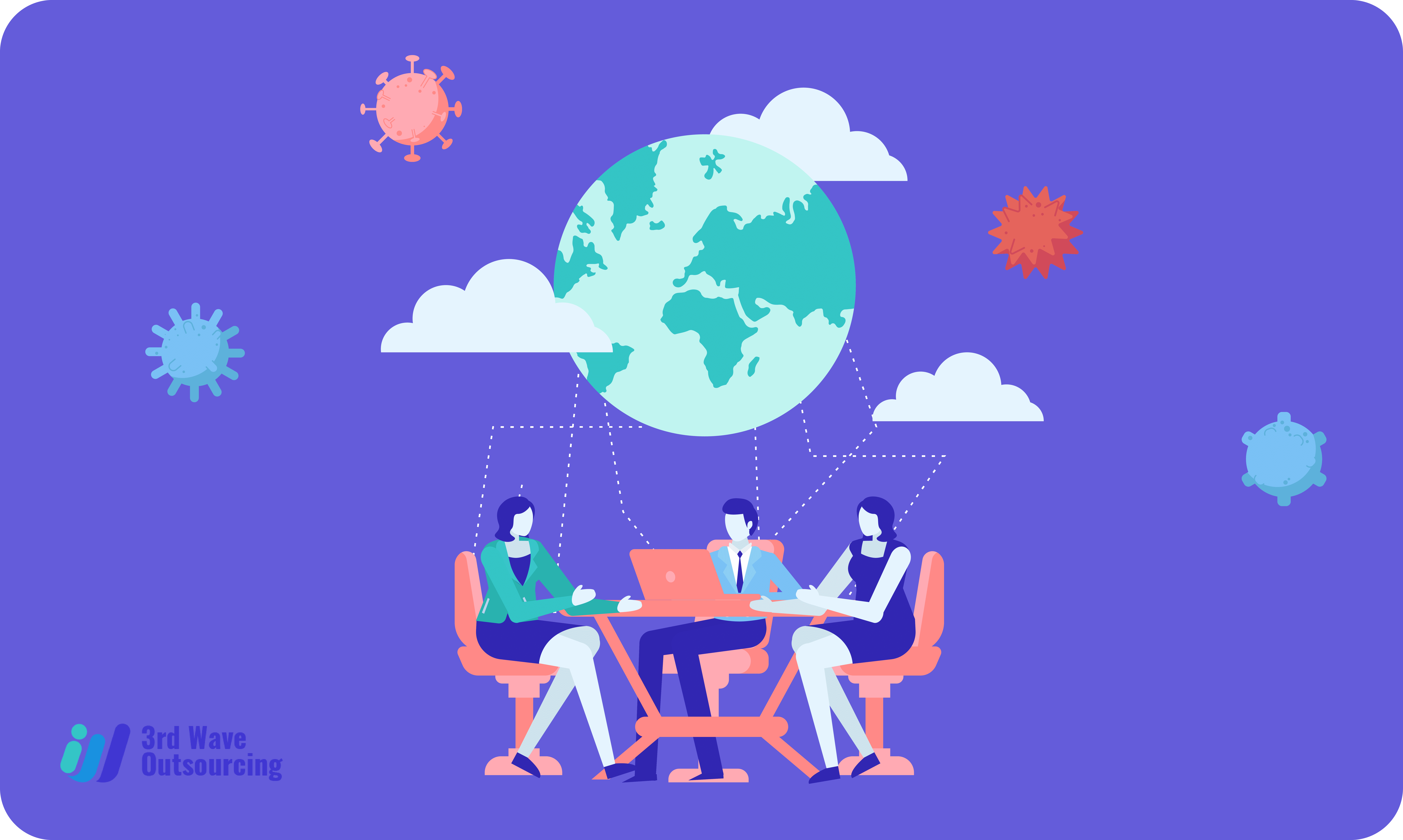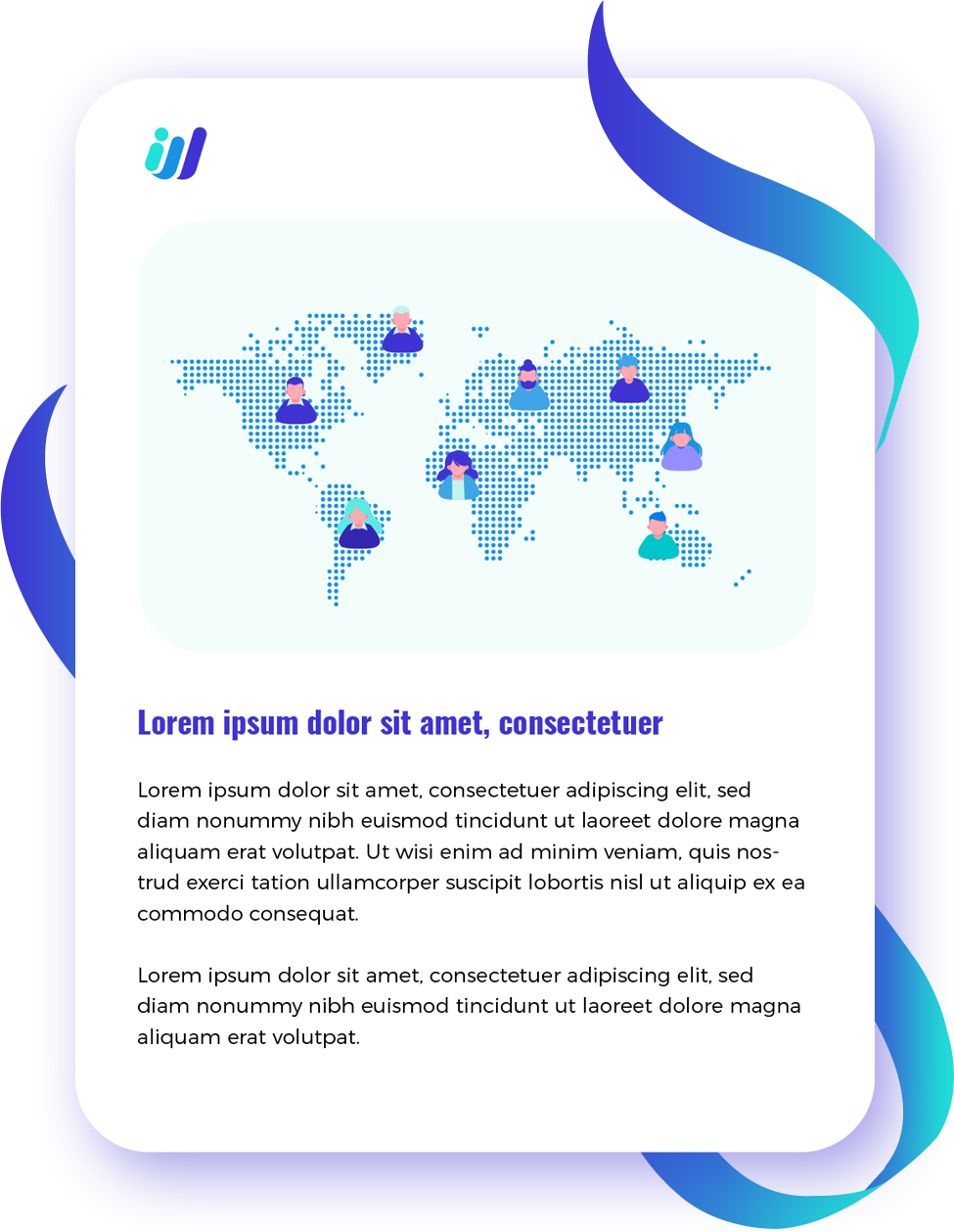The global business process services industry has an estimated revenue of $1 trillion annually is expected to grow at an annual rate of about 5 percent over the next five years. The post-pandemic response of virtually every sector of the economy is to look towards Managed Service Providers (MSPs) and outsourcing teams for value creation, continued growth, and business resilience in the new normal.
According to McKinsey research, more than 90 percent of global services hubs made the transition to a remote delivery model with virtually no loss of productivity, client service experience, or employee satisfaction.
There are 5 key components that are driving critical changes in outsourcing practices for 2022 and beyond.
1. Outsourcing Relations Focus on Business Continuity
In its simplest form, a business continuity plan (BCP) is a structured response that contains all vital information an organization needs to restore and maintain critical business functions during an emergency or crisis. Unlike disaster recovery that mainly focuses on the recovery of data, hardware, and other IT assets after a disruption occurs, BCP takes account of all measures to ensure that operations continue even during a disaster.
Every organization during 2020 sets its eyes on one thing: to recover from the dark phase of low business. But more than disaster recovery, they had to respond to the fluctuations in business growth and be focused on business continuity. They need to react, remodel, and return to business in the “new normal” which is touted to be financially risky. Businesses have started looking for outsourcing contracts that have provisions for lockdowns or global uncertainties where the world comes to a standstill. No matter how hesitant, confused, or scared startups, enterprises, or SMBs were, they continued getting their products built to digitally transform and avoid becoming a thing of the past. They enhanced their outsourcing relationships to keep their businesses afloat and ready for any future disruption.
2. Outsourcing Cybersecurity Functions Gains Prominence
The COVID-19 pandemic ushered in a digital revolution with a majority of the businesses undertaking five years’ worth of digital transformation within a few months. And as IT leaders and decisionmakers scaled their digital transformation initiatives, the threats escalated. IT leaders want all levels of their organization’s security to improve – employee training, cloud, business continuity, and disaster recovery – not just the business level. Investments of more than 40% of their overall budget is what 56% of the leaders intend to do. They search for the right MSPs or outsourcing team to handle their cybersecurity functions including provisions on threat intelligence, bot detection, and vulnerability scanning.
The goal is to determine how strong the cybersecurity company’s Managed Security Service Provider (MSSP) is. This is especially important for small and midsized businesses where IT staff and resources are not abundant. In addition, an organization’s IT staff may be large, but staff and employees might not be armed with the necessary cybersecurity knowledge. Outsourcing to the right MSSP is the logical thing to do.
3. Outsourcing Gears Up For The Fourth Industrial Revolution
New age technologies in outsourcing will enable both parties to become more flexible, resilient, efficient, and productive while driving stable revenue during the Fourth Industrial Revolution. Some of the technologies we can see being incorporated into outsource services are:
- 5G Network: Offering fast wireless networking, 5G takes outsourcing to the next level in the Fourth Industrial Revolution. It makes everything faster in outsourcing relationships: management, communication, collaboration, data transfer, and much more.
- Artificial Intelligence: AI stands to transform IT outsourcing by promoting efficiency through automation, reducing costs, providing control, increasing security and improving negotiation terms for contracts. CIOs and technology leaders who want to strategize enterprise operational goals will have to work hand in hand with outsourcing vendors to maximize the advantages of AI capabilities.
- Cloud Computing: Most businesses are taking outsourcing practices to the cloud. No wonder the cloud market is expected to be $331 billion by 2022. Cloud storage allows seamless collaboration and accelerates digital transformation. Most businesses are permanently enabling cloud infrastructure and including cloud capabilities in outsourcing would make the relationships more transparent.
- Internet of Things: The Internet of Things is enabling service providers in the outsourcing community to offer accurate and real-time data analytics for predictive maintenance, optimize networking infrastructure, and even generate BI insights.
- Robotic Process Automation: A new digital model of outsourcing is taking shape and software bots are replacing a large portion of the IT work. Most of the repetitive tasks that don’t require human interference are being done by bots. These AI-powered bots are intelligent and aren’t just making outsourcing more tech-savvy but also help save time, costs, and human efforts.
4. Talent Retention and Development Gains Prominence
In the wake of a global pandemic and unprecedented adoption of new technologies in the workplace, organizations find themselves at a critical inflection point in attracting, retaining, and cultivating the best talent. As the landscape evolves, it’s increasingly clear that human capital has never been more important for organizational success.
An organization that invests in its employees with a successful talent strategy is found to be more innovative, adaptive, productive, and ahead of the competition in attracting and retaining top talent. This means rapidly converting from traditional methods to virtual/remote learning interventions for upskilling, reskilling, cross-functional skilling, and continuous learning of its employees using the three Ps of learning in the new normal – Personalized, Precise, and Proactive.
5. Managed Service Providers (MSPs) as Potential Transformation Partners
The managed services market will grow to $274 billion by 2026, with many companies turning to MSPs to mitigate the impact of the pandemic in the past year. To wit, the percentage of companies using MSPs to manage more than half of their IT needs increased from 25% last year to 38% in 2021, according to NTT’s 2021 global managed services survey.
For enterprise buyers, a new concern is to consider the transformational capabilities of managed service providers, including sector-domain experience and facility with digital and design thinking. Third-party vendors and outsourcing teams that excel in these skills can offer new commercial models allowing for consumption-based pricing, or even self-funded transformation. These arrangements often include a strong upfront commitment to productivity improvement, with payout plans linked to business outcomes.
Conclusion
Outsourcing practices are changing in the new normal. You need to harness the power of Third Wave Outsourcing to future-proof your organization in today’s competitive global business landscape.
Transform your talent acquisition strategy with the help of expert outsourcing professionals who have access to a pool of highly qualified and vetted candidates. Request a free consultation today.



